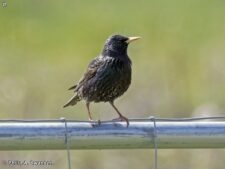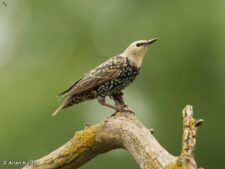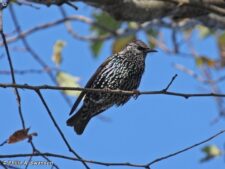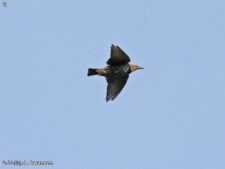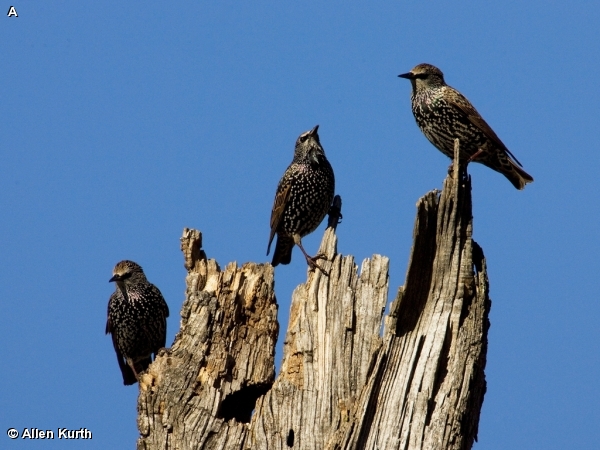
8.25 inches long. The European Starling has a pointed bill that is yellow for most of the year but dark in the fall. The plumage is black overall with green and purple iridescence. White spots are scattered around the head and body. These spots are largest in the fall when the bird can have more of a gray and brown look to it. The tail is very short and squared off.
The European Starling is a common year round breeding resident of the Forest.
The European Starling very often is seen in large flocks, often with blackbirds such as Common Grackles. A total of about 100 individuals were released in New York City, in 1890 and 1891. Now the population has expanded to more than 200 million and the species is distributed across most of the continent. It uses cavities for nesting and has had a detrimental effect on many native cavity-nesting species. The Starling sings a series of trilling melodies, clear whistles, and clatters. It also imitates songs of other birds.
Disclaimer: The content of NatureSearch is provided by dedicated volunteer Naturalists of Fontenelle Forest who strive to provide the most accurate information available. Contributors of the images retain their copyrights. The point of contact for this page is: Phil Swanson.

